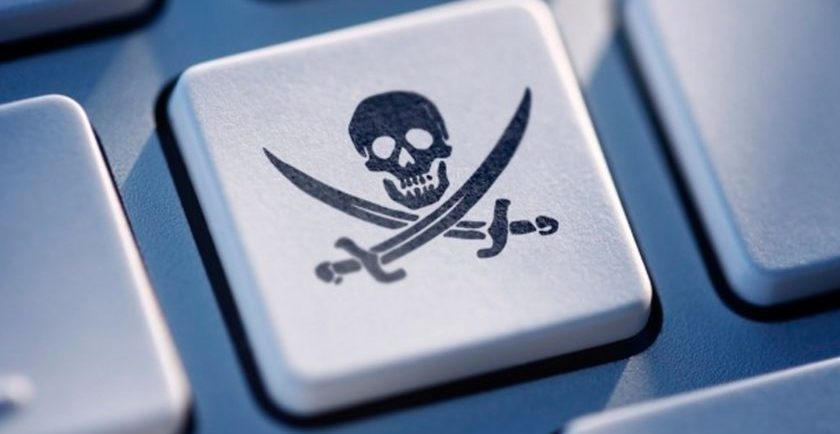
M&E Journal: Disrupting Piracy
Once upon a time, commercial VOD content was distributed via physical media: video cassette, LaserDisc, DVDs, and ultimately Blu-ray. Every town had its share of video rental stores that would stock up on physical copies, sometimes hundreds of copies of a presumptively popular title per location.
Copy protection mechanisms, reproduction equipment requirements, and physical media costs met the content owner’s anti-piracy requirements.
The cost and storage requirements of these physical artifacts severely limited the availability of content at any one location, creating an opportunity for mail-based businesses like Netflix.
Technological constraints relegated live content like sporting events to purpose-built broadcast, cable, and satellite networks. While these networks could theoretically support VOD services, capacity constraints severely limited their growth.
OTT video streaming originally meant content on social media sites like YouTube, Facebook, Instagram, and others.
 With content available for free to anyone who wanted to watch, there was no incentive for unauthorized re-distribution. The growth of these social media sites was paralleled and enabled by the proliferation of OTT video devices including smart phones, tablets, and smart TVs.
With content available for free to anyone who wanted to watch, there was no incentive for unauthorized re-distribution. The growth of these social media sites was paralleled and enabled by the proliferation of OTT video devices including smart phones, tablets, and smart TVs.
In 2007 Netflix, which had just shipped its one billionth DVD, introduced a limited VOD streaming service, heralding the birth of the commercial streaming industry.
Two years later, Netflix customers were watching more videos than they were renting on discs. Two years after that, Netflix was the largest source of internet traffic in North America, representing 30 percent of all traffic during prime viewing hours.
Today, over 80 percent of worldwide internet traffic is video.
Streaming video completely changed the economics of video piracy. For commercial streaming services content rights are the single largest expense, often more than 50 percent of all operating expenses.
An HD movie can be stored in the cloud for just pennies per month, and a single copy can be streamed to an unlimited number of viewers. Delivery of an individual stream costs just a few more pennies. COVID-19 upped the ante when the movie industry was forced to release new movies to streaming the same day as the theatrical release (if the movie was even available in theaters).
DISRUPTING PIRACY
There are two tools to fight streaming piracy, Digital rights management (DRM) and watermarking. Industry groups including the Digital Cinema Initiatives, MovieLabs, and the Streaming Video Alliance have published standards for content protection. These standards require both DRM and forensic watermarking, and compliance is generally a requirement in your content license agreement.
DRM refers to technology, tools, and systems used to protect and control access to propriety content.
Watermarking refers to marking digital content so that it can easily be traced to its source. Visual content watermarks can be either visible or invisible.
The most familiar form of watermarking is a visible overlay over the image, and all stock image providers use them. The overlay allows a potential customer to evaluate the image while at the same time preventing its commercial use. Importantly, the presence of the overlay does not affect the usability of the image for its intended purpose.
As the presence of the visual watermark has rendered the content unsuitable for an end-user, we don’t need to worry about tracing it back to its source, so the same watermark can be reused for all content.
As visual watermarking intentionally degrades the image, it is not suitable for content intended for end-users, such as streaming.
Video stream watermarks have four key requirements:
# They must be present but visually undetectable; it can’t degrade the image, even when viewed on a large- screen UHD display under ideal viewing conditions.
# They must be traceable back to the original stream for forensic purposes. Each video stream must have a unique watermark that can be traced back to the original stream.
# They must be resilient. If the watermark can be damaged or removed, then it isn’t useful.
# They must be usable at scale.
BUYDRM’S MULTIMARK SERVER MEETS ALL THESE REQUIREMENTS
Content providers have a strong interest in protecting their brand when licensing content for streaming. Con- tent license agreements will often include requirements for image quality, sometimes specifying the resolutions and bitrates required to assure that the viewer sees “their” content at the highest quality possible.
These quality requirements also apply to watermarking.
Watermark traceability is important for a couple of reasons. When content is re-distributed illegally, the ability to prove how many copies were distributed and who stole them is required when assessing damages. For live streaming, when a pirated stream is discovered the watermark traceability allows you to identify and terminate the source of the stream in real time without impacting legitimate customers.
 Because DRM does such a good job of protecting the original stream, pirates often start with a legitimate stream and attempt to capture the actual video stream after it is decoded. Common techniques include digital screen grabbing, intercepting the HDMI connection to the display, and even pointing a camera at the video screen.
Because DRM does such a good job of protecting the original stream, pirates often start with a legitimate stream and attempt to capture the actual video stream after it is decoded. Common techniques include digital screen grabbing, intercepting the HDMI connection to the display, and even pointing a camera at the video screen.
After capturing a stream, they may crop, resize or completely re-encode the video to try and avoid detection. A resilient watermarking must be impervious to all these attacks.
An otherwise good watermarking system is useless if it is too expensive to deploy. The encoding step seems like a logical place to insert the watermark but dedicating a unique encoder to each stream isn’t economically feasible if you want to support millions of simultaneous streams.
This is where two-step watermarking comes in. In the first step, placeholders for the watermark are included throughout the video stream during the encoding process.
In the second step, stream-specific watermarks are then inserted in the pre-defined locations during packaging.
NEW OPPORTUNITIES
Content owners have invested vast sums in producing the content and reasonably expect a return on that investment. Pirated content is a direct threat to that return. In the past they have attempted to protect the content by using secure distribution channels like movie theatres, sports stadiums, music venues, and secure, dedicated broadcast networks.
When the COVID pandemic disrupted many of those traditional distribution channels some content producers chose to experiment with digital streaming as an alternative.
When they did, they found that streaming increased the market for their content, and their margins.
A premium price to purchase a video stream of a new movie or live event is still cheaper than gas, parking, and tickets for the event. Now that the results of these forced experiments are coming in, more and more content producers are looking for secure digital streaming options.
** By Christopher Levy, CEO, BuyDRM **
=============================================
Click here to download the complete .PDF version of this article
Click here to download the entire Winter 2021 M&E Journal
